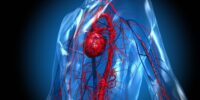What Is Breast Health and the Importance of Self-Exams

While many may argue that self-exams for breast health are time-consuming and unnecessary, it is imperative to recognize the significance of early detection and prevention.
In this article, we delve into the importance of self-exams as a crucial aspect of breast health. By understanding common breast changes and following guidelines for performing self-exams, individuals can take proactive measures to safeguard their well-being.
Integrating self-exams into your routine empowers you to serve yourself and prioritize your overall health and wellness.
Key Takeaways
- Understanding breast health is essential for overall well-being.
- Regular self-exams allow for early detection, intervention, and increased chances of successful treatment.
- Familiarizing oneself with the normal look and feel of breasts helps identify changes.
- Self-exams should not replace clinical exams performed by healthcare professionals.
The Basics of Breast Health
In order to understand the importance of self-exams, it is crucial to first grasp the basics of breast health. Breast health awareness is essential for individuals who desire to serve others by promoting overall well-being.
Breast self-care involves taking proactive steps to ensure the optimal health of the breasts. This includes regular self-exams, which are simple yet effective methods to detect any changes or abnormalities in the breast tissue. By performing self-exams, individuals can become familiar with the normal look and feel of their breasts, making it easier to identify any potential concerns.
Early detection of breast abnormalities can greatly increase the chances of successful treatment and recovery. Therefore, it is imperative for individuals to prioritize breast health awareness and incorporate self-exams into their routine self-care practices.
Benefits of Regular Self-Exams
Performing regular self-exams offers individuals the opportunity to detect any changes or abnormalities in their breast tissue, allowing for early detection, intervention, and increased chances of successful treatment and recovery. Breast health awareness is crucial in maintaining overall well-being and reducing the risk of developing breast cancer.
By familiarizing themselves with the normal look and feel of their breasts, individuals can easily identify any changes that may occur. Early detection plays a vital role in the successful treatment of breast cancer, as it allows for prompt medical attention and intervention.
It is important to remember that not all breast changes indicate cancer, as there are various common breast changes that can occur due to hormonal fluctuations, pregnancy, breastfeeding, or other factors. Therefore, understanding and identifying these common breast changes is essential in maintaining breast health.
Identifying Common Breast Changes
By familiarizing ourselves with the normal look and feel of our breasts, we can easily identify common breast changes and ensure optimal breast health. It is important to be aware of these changes as they can indicate potential health concerns. Some common breast changes to be aware of include:
- Skin changes such as redness, dimpling, or puckering
- Nipple changes like inversion, discharge, or changes in direction
- Lumps or thickening in the breast tissue
Being knowledgeable about these changes can help us detect any abnormalities early on and seek medical attention promptly. Remember, early detection is key in the treatment of breast conditions, including breast cancer.
Transitioning into the next section about guidelines for performing self-exams, let us now discuss the importance of regular self-examinations in maintaining breast health.
Guidelines for Performing Self-Exams
To ensure thorough and effective self-exams, it is recommended to perform these examinations monthly and in conjunction with regular clinical breast exams. Self-exams are an essential part of maintaining breast health and early detection of any abnormalities. By becoming familiar with the normal look and feel of your breasts, you can better identify changes or potential issues.
Here are some self-exam techniques and frequency recommendations:
| Technique | Frequency |
|---|---|
| Visual | Monthly |
| Manual | Monthly |
| Lying down | Monthly |
| Standing | Monthly |
Performing self-exams monthly allows you to track changes over time and notice any new developments. It is important to remember that self-exams should not replace regular clinical breast exams performed by healthcare professionals. Combining self-exams with clinical exams ensures a comprehensive approach to breast health. By being proactive and consistent with self-exams, you can play an active role in monitoring your breast health and potentially detect any issues early on.
Early Detection and Breast Cancer Prevention
Early detection and breast cancer prevention are crucial in saving lives. By conducting regular self-exams, individuals can become familiar with their breasts and identify any changes or abnormalities.
It is also important to know the risk factors associated with breast cancer and to schedule regular check-ups with healthcare professionals for early detection and intervention.
Self-Exams Save Lives
Numerous studies have shown that regular self-exams significantly increase the chances of detecting breast cancer at an early stage, ultimately saving lives. Early detection is key in effectively treating breast cancer, and self-exams play a crucial role in achieving this. By encouraging women to perform self-exams regularly, we can raise awareness about the importance of early detection and empower individuals to take control of their own breast health.
To emphasize the significance of self-exams, consider the following points:
- Self-exams allow individuals to become familiar with their own bodies, making it easier to identify any changes or abnormalities.
- Regular self-exams promote early detection, which can lead to more successful treatment outcomes and improved survival rates.
- Self-exams enable women to take an active role in their own health, empowering them to make informed decisions about their breast health and seek medical attention when necessary.
Know Your Risk Factors
What are the key risk factors to be aware of for early detection and prevention of breast cancer?
Breast cancer is a complex disease with multiple factors influencing its development. It is crucial to understand the risk factors associated with breast cancer to ensure early detection and prevention.
One of the primary risk factors is a family history of breast cancer, indicating genetic factors at play. Women with close relatives who have had breast cancer are at an increased risk.
Other risk factors include age, hormonal factors, obesity, alcohol consumption, and exposure to radiation.
Recognizing these risk factors can help individuals take proactive measures such as regular breast self-examinations, mammograms, and lifestyle modifications to reduce the risk of developing breast cancer.
Importance of Regular Check-Ups
Regular check-ups, along with self-exams and mammograms, are crucial for the early detection and prevention of breast cancer. By scheduling regular check-ups, individuals can stay informed about their breast health and take proactive measures to maintain it. Here are some reasons why regular check-ups are important:
- Early detection: Regular check-ups allow healthcare professionals to identify any changes or abnormalities in the breasts, which can lead to early detection of breast cancer.
- Prevention: Regular check-ups provide an opportunity for healthcare professionals to educate individuals about breast health awareness and preventive measures such as lifestyle changes and screenings.
- Peace of mind: Regular check-ups offer reassurance and peace of mind, knowing that one is taking the necessary steps to ensure breast health.
Integrating Self-Exams Into Your Routine
One effective way to prioritize breast health is by incorporating monthly self-exams into your personal healthcare regimen. Self-exams are a proactive measure that allows individuals to become familiar with their own bodies and detect any changes or abnormalities in their breasts. By regularly performing self-exams, individuals can take an active role in their own breast health and potentially identify any issues early on. It is important to remember, however, that self-exams should not replace regular screenings and check-ups with healthcare providers. Healthcare providers play a crucial role in breast health by providing clinical breast exams, mammograms, and other necessary tests. Integrating mindfulness practices, such as deep breathing and relaxation techniques, can also enhance the self-exam experience by promoting a sense of calm and focus.
| Benefits of Self-Exams | Tips for Performing Self-Exams |
|---|---|
| Early detection of abnormalities | Perform self-exams monthly |
| Empowerment and self-awareness | Use the pads of your fingers to feel for lumps or changes |
| Peace of mind and reduced anxiety | Report any changes to your healthcare provider promptly |
Frequently Asked Questions
What Are the Risk Factors for Developing Breast Cancer?
Risk factors for developing breast cancer include age, family history, genetic mutations, personal history of breast conditions, certain reproductive factors, and exposure to estrogen. Prevention measures such as regular screenings, maintaining a healthy lifestyle, and avoiding known risk factors can help reduce the risk.
Are Self-Exams the Only Method for Early Detection of Breast Cancer?
Alternative screening methods such as mammograms and clinical breast exams are also effective for early detection of breast cancer, in addition to self-exams. Regular check-ups offer the benefits of early diagnosis and treatment, improving outcomes and saving lives.
How Often Should I Perform a Self-Exam?
Performing self-exams for breast health is crucial in early detection of abnormalities. The frequency of self-exams depends on individual risk factors and guidelines vary. Following proper technique and consulting with a healthcare professional ensures effective self-examination practices.
What Should I Do if I Find a Lump During a Self-Exam?
If you find a lump during a self-exam, it is important to seek medical advice immediately. A healthcare professional can guide you through the next steps, provide necessary tests, and offer the necessary healthcare support.
Can Self-Exams Replace Regular Mammograms?
Self-exams are a valuable tool for detecting breast abnormalities, but they should not replace regular mammograms. Mammograms provide a more comprehensive assessment, detecting tumors at an earlier stage and increasing the chances of successful treatment.









